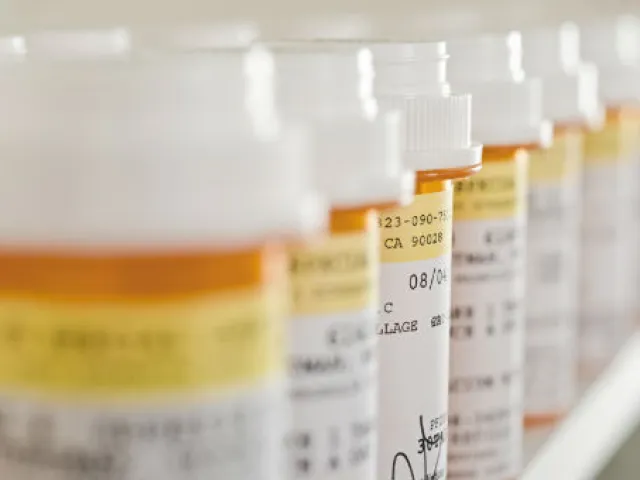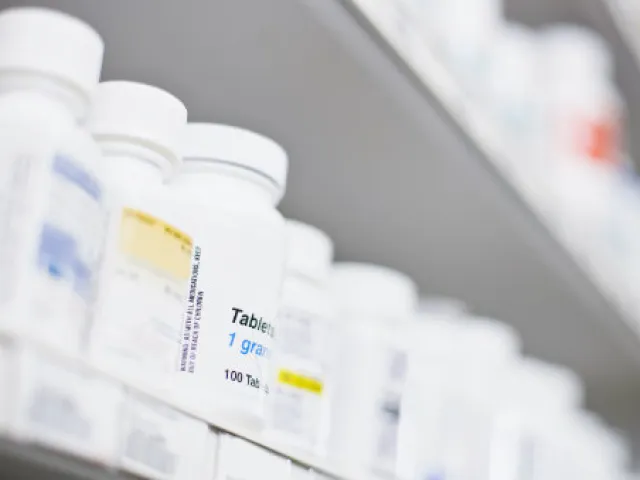Table of contents
Hospital and retail pharmacies that scan 2D barcodes on incoming products to support DSCSA compliance objectives—and store that scanned data in a serialized inventory—will discover new opportunities to boost operational efficiency, improve patient safety, and ultimately increase pharmacy revenue.
A serialized inventory provides pharmacies with a single, centralized source of truth about inventory that spans the continuum of care and pharmacy locations. It also drives reporting capabilities, inventory analytics, and secure data sharing across the enterprise and with external trade partners, allowing pharmacies that implement a serialized inventory to recognize many of these benefits immediately.
Phase II of the US Drug Supply Chain Security Act (DSCSA) became law in November 2020 and requires that all pharmacies receive only serialized products from suppliers. This means each unit of purchase must include a Global Trade Item Number (GTIN), a serial number, a lot number, an expiration date, and a 2D data matrix barcode, which enables these data fields to be easily scanned.
The new track and trace regulations provide a clear opportunity to capitalize on the business benefits of 2D scanning and serialized inventories, and many pharmacies are getting started now.
What is a serialized inventory?
A serialized inventory—or serialized data repository, as it is sometimes called—can provide detailed information about pharmaceutical products right down to the unit of purchase. While traditional pharmacy inventory systems show the quantity of products in stock, a serialized inventory offers far greater granularity and can differentiate and track individual items in a lot or case.
By scanning the 2D barcodes on inbound products and storing the data in a serialized inventory, pharmacies can access a great deal of information about products in stock. This includes serial numbers, expiration dates, National Drug Codes (NDCs), and lot numbers. Additionally, a serialized inventory captures all serialization event data associated with pharmaceutical products. That means you can easily discover where items were manufactured, where they have been on their journey through the supply chain, and most importantly, where they are in your organization. That information is particularly valuable when managing inventory and locating recalled products.
The combination of 2D scanning and a serialized inventory complements traditional inventory systems by providing end-to-end inventory visibility and laying a foundation that enables pharmacies to simplify, streamline, or fully automate what have traditionally been cumbersome and time-consuming processes. Here’s a look at four key use cases for a serialized inventory in the pharmacy.
Support for DSCSA compliance efforts
DSCSA mandates that pharmacies must only transact in serialized products after November 27, 2020. Scanning inbound product data into a serialized inventory creates an event record that can be used to demonstrate DSCSA compliance to both internal and external auditors.
Rapid purchase reconciliation
Pharmacy employees spend a significant amount of time making sure that products they received from suppliers match what was ordered. This purchase reconciliation process typically involves visual inspections and manual counting. But by scanning inbound products into a serialized inventory, pharmacies can quickly confirm the accuracy of orders and automatically perform three-way matches against purchase orders.
Simplified expiry management
Another cumbersome and costly manual process that eats up time in the pharmacy is expiry management—the process of identifying and removing products from the shelves before their expiration dates arrive. Expiry management involves tracking down products, checking expiration dates, and disposing of expired products or sending them back to manufacturers or distributors. With a serialized inventory, expiry management gets substantially easier and less time-consuming.
Upon scanning, the expiry data for each incoming product is quickly stored and easily accessible in the serialized inventory. This information can then be reported on or passed on to traditional inventory systems to automate the expiry management process, eliminating visual expiration checks and reducing cycle counts.
There’s also a financial incentive for digitalizing the expiry management process with a serialized inventory: With better expiry management, pharmacies can make better decisions about when to return short-dated products to manufacturers. As a result, they can maximize the refunds they receive for unsold products nearing expiration.
Faster recalls
Traditional recall processes for pharmaceuticals are well known for being inefficient, time-consuming, and error-prone. Recall notifications are typically sent to everyone in the supply chain, including wholesalers, distributors, third-party logistics providers, and hospital and retail pharmacies—even pharmacy locations that may not have received the recalled product at all. As a result, pharmacy employees waste a great deal of time responding to recall notifications and searching for product that was never received or is no longer in inventory.
Following recall notifications, pharmacy personnel must scramble to discover whether the pharmacy received the recalled products, how much is currently in stock, and to which patients the product was dispensed. The process generally involves inefficient, paper-based notifications and results in lost time that would have been better spent focusing on patients and making operational improvements.
With 2D scanning and a serialized inventory, hospital and retail pharmacies can instantly identify recalled products, eliminate manual processes, and notify affected patients about recalls faster than ever before.
Attain end-to-end visibility with TraceLink
TraceLink—the world’s largest integrated digital supply network for the pharmaceutical industry—enables hospital and retail pharmacies to easily and securely exchange serialization data between pharmacy locations and with manufacturers, 3PLs, and distributors.
TraceLink’s solutions for the healthcare industry support both full and partial 2D serialized barcode scanning strategies and provide pharmacies with an EPCIS-based serialized repository to manage events associated with serialization data. With a serialized inventory from TraceLink, pharmacies can significantly improve inventory and recall management, analysis, and reporting. Additional benefits include:
- Avoid the costly customizations required to integrate WMS and ERP systems with serialization data.
- Monitor the current state and history of serialized inventory.
- Connect to hundreds of thousands of authenticated trading partners.
- Execute business logic based on EPCIS event data and master data.
- Get 24/7 access to TraceLink’s customer support team.
The world’s leading pharmaceutical industry companies rely on the TraceLink network for data integrity, proven performance, and end-to-end supply chain visibility. Contact the TraceLink sales team to learn more.
Article originally published November 2019. Updated June 2021.









